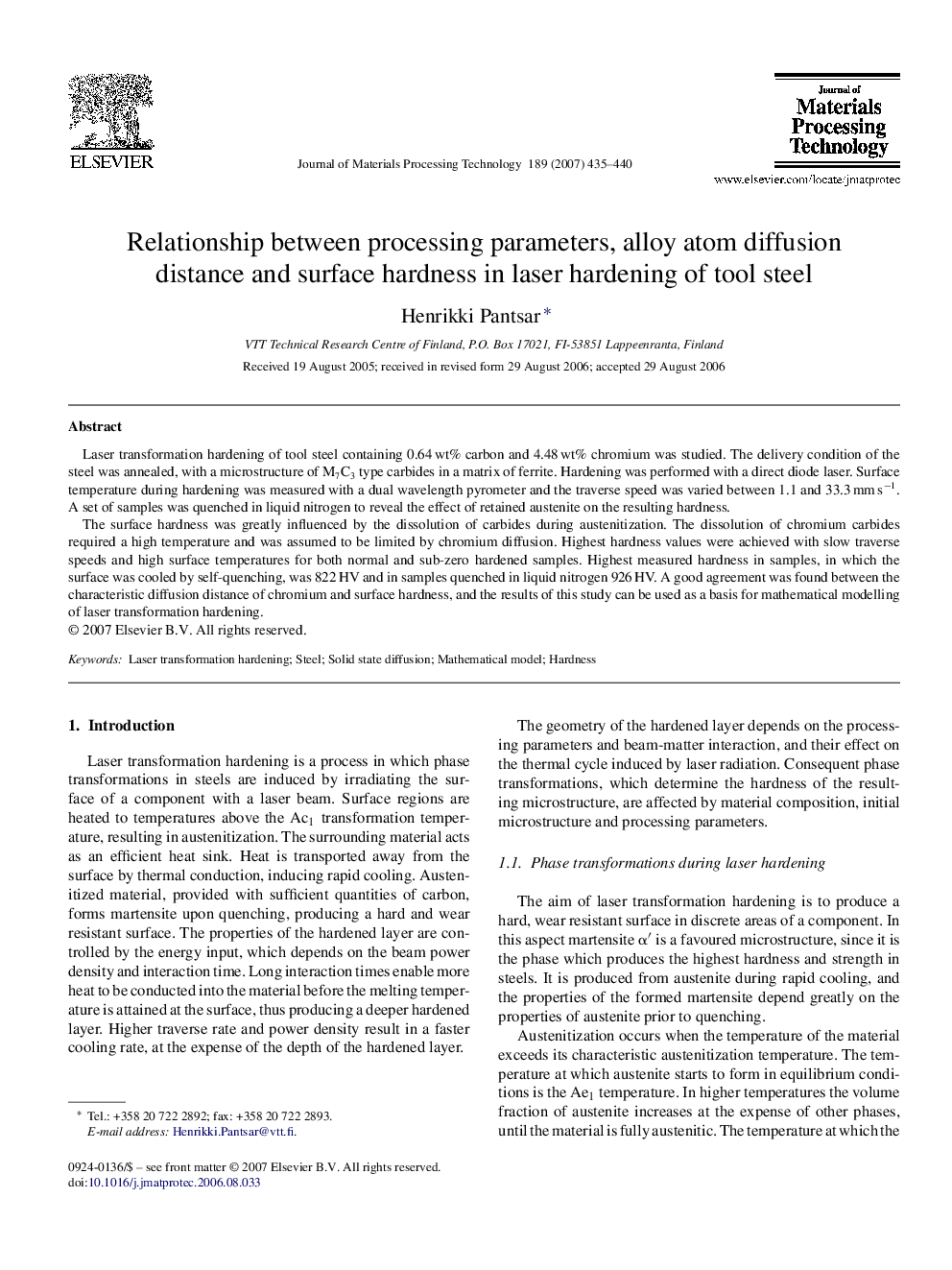| Article ID | Journal | Published Year | Pages | File Type |
|---|---|---|---|---|
| 795766 | Journal of Materials Processing Technology | 2007 | 6 Pages |
Laser transformation hardening of tool steel containing 0.64 wt% carbon and 4.48 wt% chromium was studied. The delivery condition of the steel was annealed, with a microstructure of M7C3 type carbides in a matrix of ferrite. Hardening was performed with a direct diode laser. Surface temperature during hardening was measured with a dual wavelength pyrometer and the traverse speed was varied between 1.1 and 33.3 mm s−1. A set of samples was quenched in liquid nitrogen to reveal the effect of retained austenite on the resulting hardness.The surface hardness was greatly influenced by the dissolution of carbides during austenitization. The dissolution of chromium carbides required a high temperature and was assumed to be limited by chromium diffusion. Highest hardness values were achieved with slow traverse speeds and high surface temperatures for both normal and sub-zero hardened samples. Highest measured hardness in samples, in which the surface was cooled by self-quenching, was 822 HV and in samples quenched in liquid nitrogen 926 HV. A good agreement was found between the characteristic diffusion distance of chromium and surface hardness, and the results of this study can be used as a basis for mathematical modelling of laser transformation hardening.
